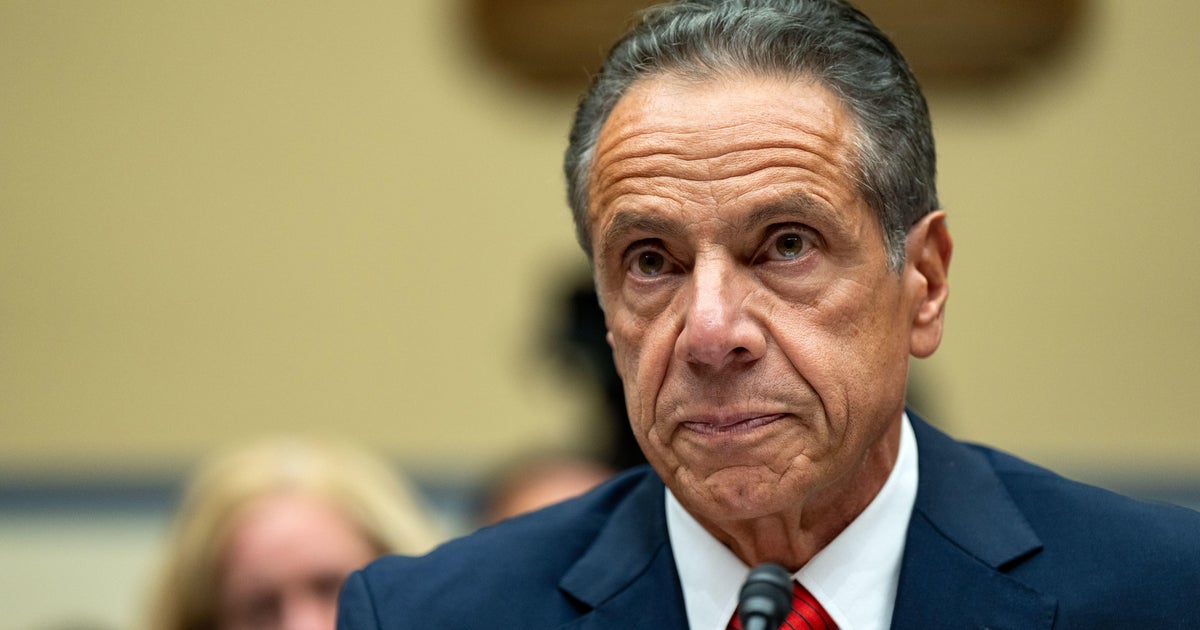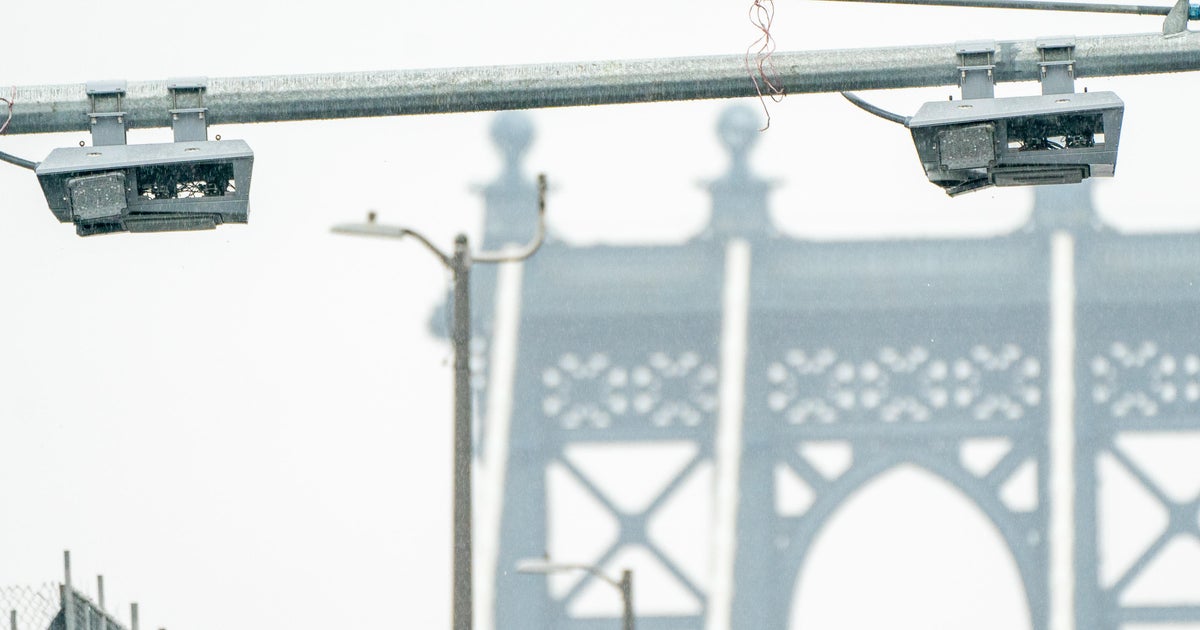Bridges Across New York, Connecticut Deemed Structurally Deficient
NEW YORK (CBSNewYork/AP) -- More than 2,000 New York state bridges, including the Brooklyn Bridge, have been deemed structurally deficient and in dire need of repairs by the federal government.
An Associated Press review of 607,380 bridges in the federal government's National Bridge Inventory found that 65,605 of them are structurally deficient. New York state leads the pack.
Hundreds of bridges in Connecticut have also made the list, and state officials are exploring the possibility of implementing tolls for the first time in decades to help come up with the billions of dollars needed to repair or replace the aging spans.
"In no case is a bridge unsafe unless we actually put a posting notice up that says this bridge has been posted for a weight limit, for example, because we found something to it that we don't want people going over it with trucks of a certain weight limit," state Transportation Commissioner Jim Redeker told WCBS 880 Connecticut Bureau Chief Fran Schneidau. "Bridges are safe in Connecticut."
Hundreds Of Bridges Across Connecticut Deemed Structurally Deficient
Redeker noted that bridges undergoing major construction, like the Q Bridge in New Haven, are automatically posted in the structurally deficient category until their final inspections are complete.
"I say, you have a legal, moral and ethical obligation as stewards of the traveling public not to let people go over something that's unsafe," says leading construction attorney Barry LePatner, author of the book "Too Big to Fall: America's Failing Infrastructure and the Way Forward."
A bridge deemed structurally deficient is considered to be in need of rehabilitation or replacement because at least one major component of the span has advanced deterioration or other problems that lead inspectors to deem its condition "poor" or worse. According to the most recent data, 20,808 bridges are deemed "fracture critical," meaning they don't have redundant protections and are at risk of collapse if a single, vital component fails.
Some 7,795 bridges nationwide fall into both categories — a combination of red flags that experts say is particularly problematic.
More than 400 of these are in New York State.
The list includes the Brooklyn Bridge, which is undergoing a four-year, $500 million reconstruction. Completed in 1883, the suspension span over the East River is being updated for about 120,000 vehicles and thousands of pedestrians crossing daily.
"It was designed before vehicles were in existence, and it's never going to be corrected for those things," said Richard Marchione, head of the state Department of Transportation's Office of Structures, responsible for bridge evaluation. "To maintain it is a big proposition for the traffic it now carries."
The state-owned Kosciuszko Bridge between Brooklyn and Queens, from 1939, is considered one of the most dangerous stretches of roadway in New York, with 160,000 daily vehicles causing massive bottlenecks resulting in a far above-average number of accidents. Gov. Andrew Cuomo helped fast-track $800 million in funding to replace the narrow twin arch with a new, nine-lane bridge by about 2017.
But all in all, New York City's biggest bridges are in generally good shape, because the administrations of two mayors, Rudolph Giuliani and Michael Bloomberg, had committed more than $5 billion "to make our bridges safe," LePatner says.
On the 82-year-old George Washington Bridge, hundreds of steel beams are being replaced, and about $1 billion is going into renovating the 77-year-old Robert F. Kennedy Bridge — previously called the Triborough — that takes travelers to the John F. Kennedy International Airport.
Most state bridges facing the double whammy of being both structurally deficient and fracture critical are not in imminent danger of collapsing, says Beau Duffy, spokesman for the state Department of Transportation.
"If it's open, it's not unsafe," he says.
Not so, says LePatner — especially with deteriorated old bridges.
"The physics is that they could fall at a moment's notice, or next month or next year — if they're left in the current condition," he says. "It's a ticking time bomb."
New York state is sprinkled with bridges that were not designed for the volume of traffic they are handling. Emergency construction on dozens has been accelerated. Others were shut down altogether. In Macedon, 20 miles outside Rochester, a closed bridge is not scheduled for repair until 2015.
And in Buffalo, where a half-dozen bridges were under repair this year, the running joke is that the city has two seasons -- winter and construction.
Also needing constant fixing are bridges used by Amtrak trains, and the Metro-North and Long Island commuter railroads to New York City suburbs.
Meanwhile, Connecticut has more than 500 bridges considered structurally deficient, and more than 200 that are "fracture critical," the AP reported. Connecticut has 49 bridges that are both structurally deficient and fracture critical, records show.
But spokesman for the Connecticut Department of Transportation said the bridges in question are safe and would not be kept open if they posed a safety risk. Those bridges get extra attention in inspections, and the state conducts more frequent inspections of bridges deemed to need it, he said.
The 49 bridges that are structurally deficient and fracture critical have a combined average daily traffic of 1.8 million, records show. The four busiest ones carry traffic on Interstate 95 in heavily congested Fairfield County.
Ten of the 49 bridges are in Hartford, seven in Waterbury and four in New Haven.
Many of the bridges were built in the 1950s and 1960s, and some are decades older.
Connecticut, like other New England states, has many older bridges with an average age of 52 years, Nursick said.
The state has about 20 major bridge projects underway, spending more than $500 million on the Pearl Harbor Memorial Bridge in New Haven alone, Nursick said. A bridge in Hartford will have to be replaced at a cost of $2 billion to $3 billion, and many others will need work, he said.
You May Also Be Interested In These Stories
(TM and © Copyright 2013 CBS Radio Inc. and its relevant subsidiaries. CBS RADIO and EYE Logo TM and Copyright 2013 CBS Broadcasting Inc. Used under license. All Rights Reserved. This material may not be published, broadcast, rewritten, or redistributed. The Associated Press contributed to this report.)



